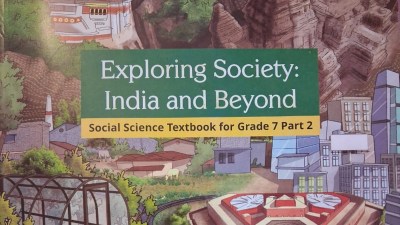On this day 108 years ago, on April 24, 1915, the Ottoman Empire (now Turkey) began rounding up Armenian political and cultural leaders in Constantinople, marking the beginning of what would come to be known as the Armenian genocide.
Over the next year or so, over a million Armenians would die — executed, murdered, or left to die of exhaustion and starvation. Many others would be exiled, losing their homeland forever.

In the century since, the term “genocide” is still not universally applied to the Armenian tragedy, though support for that is growing.
Turkey, meanwhile, insists what happened was not genocide, contests the number of victims, and punishes citizens who dispute the official version: Nobel Laureate Orhan Pamuk and Booker Prize nominee Elif Shafak, both of whom faced legal proceedings, are a case in point.
What exactly was done to the Armenians before World War I? What is the official definition of genocide, and what is the debate around whether or not the Armenian massacre can be called one?
What happened to the Armenians
Armenians are an ancient people, whose traditional homeland by the beginning of the 20th century was divided between the Russian and the Ottoman empires. In the Ottoman Empire, dominated by Muslims, Armenians were a Christian, well-off minority. On account of their religion, they faced discrimination, which they had been protesting against and demanding greater say in the government. This had led to resentment and attacks against the community.
By the beginning of the 1900s, the once vast and mighty Ottoman Empire was in the throes of a churn, territories at its far-flung borders breaking away and the ones at its heart restive for change.
Story continues below this ad
In 1908, a revolution brought a group called the Young Turks to power, and paved the way for the Committee of Union and Progress (CUP), Ittihad ve Terakki Jemiyeti, forming the government. This regime wanted ‘Turkification’ of the empire and was hard on minorities.
In August 1914, World War I broke out, and the Ottoman Empire joined forces with Germany and Austria-Hungary against Russia, Great Britain and France. The war brought antipathy towards Armenians to a boil, especially as some Armenians were sympathetic to Russia and even willing to help it in the war. Soon, the Armenians as a whole were seen as a threat. On April 14, 1915, crackdown on the community began in earnest with the arrest of prominent citizens in Constantinople, many of whom were executed. The government then ordered forcible eviction of Armenians.
 Armenian men in Kharput being marched to an execution site in 1915. (Photo: Wikimedia Commons)
Armenian men in Kharput being marched to an execution site in 1915. (Photo: Wikimedia Commons)
The US Holocaust Memorial Museum says on its website, “Fearing that invading enemy troops would induce Armenians to join them, in spring 1915 the Ottoman government began the deportation of the Armenian population from its northeastern border regions. In the months that followed, the Ottomans expanded deportations from almost all provinces regardless of distance from combat zones. The victims of the Armenian genocide include people killed in local massacres that began in spring 1915; others who died during deportations, under conditions of starvation, dehydration, exposure, and disease; and Armenians who died in or en route to the desert regions of the southern Empire [today: northern and eastern Syria, northern Saudi Arabia, and Iraq]. In addition, tens of thousands of Armenian children were forcibly removed from their families and converted to Islam.”
Rouben Paul Adalian, the director of the Armenian National Institute in Washington, DC, writes on the museum’s website, “A sizable portion of the deportees, including women and children, were indiscriminately killed in massacres along the deportation routes. The cruelty characterizing the killing process was heightened by the fact that it was frequently carried out by the sword in terrifying episodes of bloodshed…The government had made no provisions for the feeding of the deported population. Starvation took an enormous toll much as exhaustion felled the elderly, the weaker and the infirm. Deportees were denied food and water in a deliberate effort to hasten death. The survivors who reached northern Syria were collected at a number of concentration camps whence they were sent further south to die under the scorching sun of the desert.”
Story continues below this ad
What Turkey claims happened
Over the years, Turkey has expressed condolences over the deaths, but has stidently refused to accept that the Armenian massacre was a planned genocide. The website of its foreign ministry has a chapter dedicated to “The Armenian Allegation of Genocide: The issue and the facts”.
The website says, “… during these waning days of the Ottoman Empire did millions die, Muslim, Jew, and Christian alike. Yet Armenian have attempted to extricate and isolate their history from the complex circumstances in which their ancestors were embroiled. In so doing, they describe a world populated only by white-hatted heroes and black-hatted villains. The heroes are always Christian and the villains are always Muslim.”
The website goes on to say that “prior to World War I, fewer than 1.5 million Armenians lived in the entire Ottoman Empire. Thus, allegations that more than 1.5 million Armenians from eastern Anatolia died must be false”; “Armenian losses were few in comparison to the over 2.5 million Muslim dead from the same period”; “ it was the Ottoman Armenians’ violent political alliance with the Russian forces, not their ethnic or religious identity, which rendered them subject to the relocation”; that during the relocation, the government did try to protect the unpopular Armenians but the local populations attacked them; and that Armenian claims of torture and excesses depend on dubious historical sources.
What exactly is genocide?
According to the United Nations website, “The word ‘genocide’ was first coined by Polish lawyer Raphäel Lemkin in 1944 in his book Axis Rule in Occupied Europe. It consists of the Greek prefix genos, meaning race or tribe, and the Latin suffix cide, meaning killing.”
Story continues below this ad
While the term “genocide” is often used loosely in a variety of circumstances, the United Nations definition of the term is narrow and strict.
It says a crime of genocide includes two main elements, “a mental element: the intent to destroy, in whole or in part, a national, ethnical, racial or religious group, as such, and a physical element, which includes the following five acts, enumerated exhaustively: killing members of the group; causing serious bodily or mental harm to members of the group; deliberately inflicting on the group conditions of life calculated to bring about its physical destruction in whole or in part; imposing measures intended to prevent births within the group; forcibly transferring children of the group to another group.”
The intent part here is crucial. Also, the members of the attacked group must have been attacked because they are members of the group, and not as individuals, for the crime to qualify as a genocide.
As the UN says, “The intent is the most difficult element to determine. To constitute genocide, there must be a proven intent on the part of perpetrators to physically destroy a national, ethnical, racial or religious group. Cultural destruction does not suffice, nor does an intention to simply disperse a group… the target of destruction must be the group, as such, and not its members as individuals.”
Story continues below this ad
Recognition of Armenian ‘genocide’
As of today, 32 countries, including the US, France, Germany, recognise the Armenian genocide. India does not, nor does the UK. The US joined this group only in 2021, under President Joe Biden, and support from other countries too was slow in coming.
Turkey’s geopolitical importance has meant that not a lot of governments want to pick issues with it on the Armenian issue. Although most countries have condemned the tragedy, the use of ‘genocide’ has been avoided, as the term was coined only in 1944 and because Turkey has always claimed that there is no proof the deaths were planned and targetted.
The modern state of Armenia has in the past sought better ties with Turkey, although the two are now locked in a tussle over the Nagorno-Karabakh region, an Armenian-dominated part of Azerbaijan where Turkey supports Azerbaijan.
On Sunday, about 10,000 people bearing torches marched through Armenia’s capital, Yerevan. While the march was in the memory of the past tragedy, activists also burnt the flags of Turkey and Azerbaijan, as present tensions continue to simmer.



 Armenian men in Kharput being marched to an execution site in 1915. (Photo: Wikimedia Commons)
Armenian men in Kharput being marched to an execution site in 1915. (Photo: Wikimedia Commons)




































